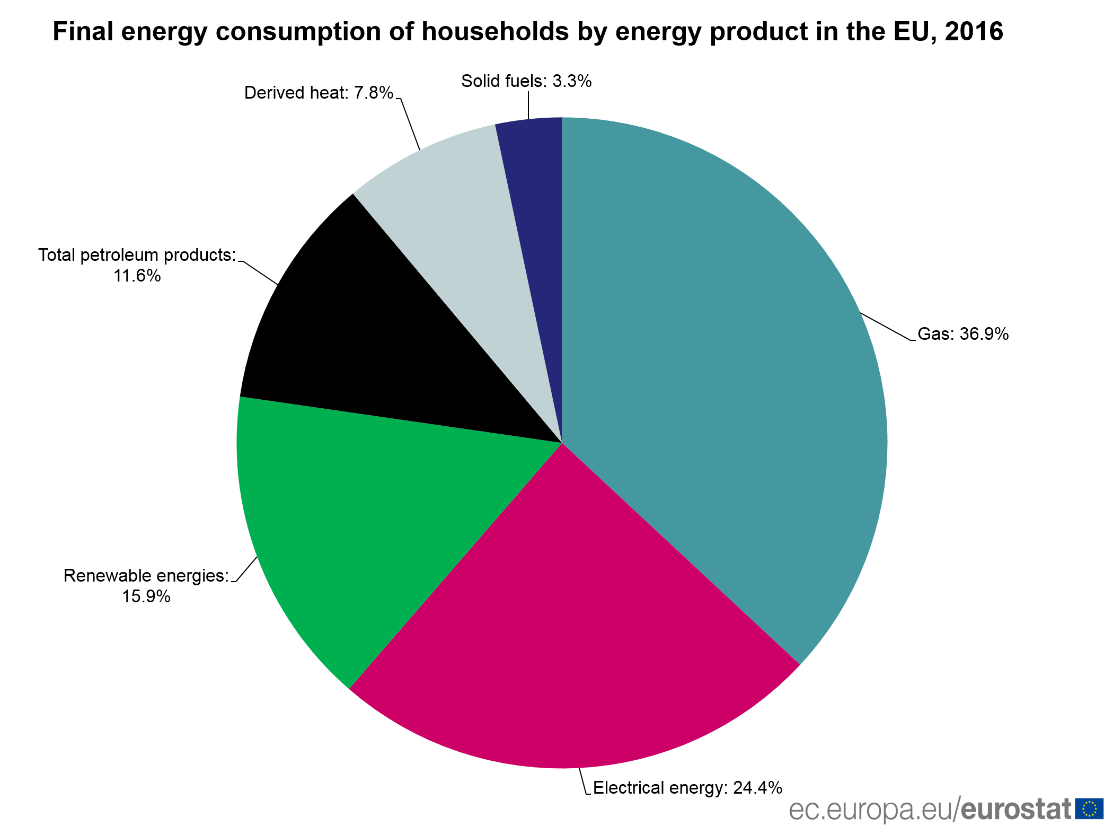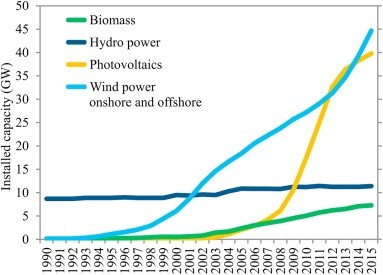Electric boilers and energy sources - overview of solutions and applications
The current situation in the world is such that energy is the focus of all social relations. In recent years, there has been a tendency for commercial buildings and households to switch their heating to electricity as much as possible. The strong determination of developed countries that most of the energy obtained is from renewable sources leads to the situation that periodic surpluses of this "green electricity"occur in some countries. In this regard, there is also a need to provide reliable consumers in the field of heating of the object. The average energy consumption in the EU tells us that 28% goes to heating private houses and residences, and of the total final energy consumed, electricity accounts for 24.4%.

Final energy consumption in the EU.
Electricity as the most perfect form of energy will be used more and more in the future, and this trend is the same in Serbia. The main problem in our country is not the expensive price of electricity, but its irrational consumption. While the average dwelling house in Germany consumes annually from 45-65 kWh/m2, the average Serbian House goes with consumption from 150 to as much as 250 kWh/m2. In Austria, Switzerland, Scandinavian countries, the average consumption goes up to 25-40 kWh/m2 per year.
This is mostly contributed by bad urban solutions, low-quality architectural projects (the price per m² of the apartment is important, not the energy used for heating/cooling it), bad building materials, bad and insufficiently trained contractors, as well as the traditional (often unreasonable) habits of landscape users.
In the coming period, a greater use of air-to-air type heat pumps is expected, but all these devices require the mandatory use of an electric boiler as an auxiliary heating device or backup source. Electric boilers appear as the only logical solution, which is cheap, reliable, easy to install and cheap to maintain.
Current trends in the production of electricity lead to an increase in the share of small, independent producer-consumers (production+consumer=PROSUMER (prosumer)). The share of photovoltaics (PV systems) in total production in Germany is constantly growing, and the same trend is present in Serbia.

Increase in the share of renewable energy sources in the EU.
With the increase in the number of PROJUMERS, the need to quickly consume that free solar energy in an efficient manner will also increase, and electric boilers are ideal for smaller apartments, cottages. Wherever the installation of a heat pump would be an investment with too long a repayment term (over 5 years), it is profitable to install an electric boiler. Unlike other heat sources, these devices work with a much higher degree of reliability, they are cheap, the installation is not expensive or complicated, they are easy to maintain (they are serviceable) and all elements are available on the market and do not contain specific rare components that are installed. Also, their use is quite simple and any average user can easily learn basic functions and parameter monitoring, so frequent and expensive interventions by professional installers and service technicians are not required. Of course, it is possible to add an ordinary or even "smart" wi-fi thermostat to them, so the whole system becomes part of a "smart house" and savings in energy consumption are expected here as well.
In the future, the production of these devices will grow, and in this regard, it will be necessary to constantly improve the product and respond to market demands. The hydraulic vessel of the boiler (boiler) is therefore also made using a parametric modeler (SolidWorks) and all refinements are easy and fast. If, due to the other components that are connected to the boiler, there was a need to change some connection (because the element that was connected there is no longer available on the market), the technical documentation would be created by simply replacing it with a prefabricated element in the modeler, and the production would receive the exact documentation for the production, in a very short time. All monitoring in production is precise and the possibility of error is reduced to a minimum.
It is also important to mention that the vast majority of subcontractors and subcontractors also own these 3D modelers as well as CNC processing machines, so the flow of information, instructions, requests is even more accelerated, and any possible error is reduced to the smallest possible extent.

